Transportation Hubs
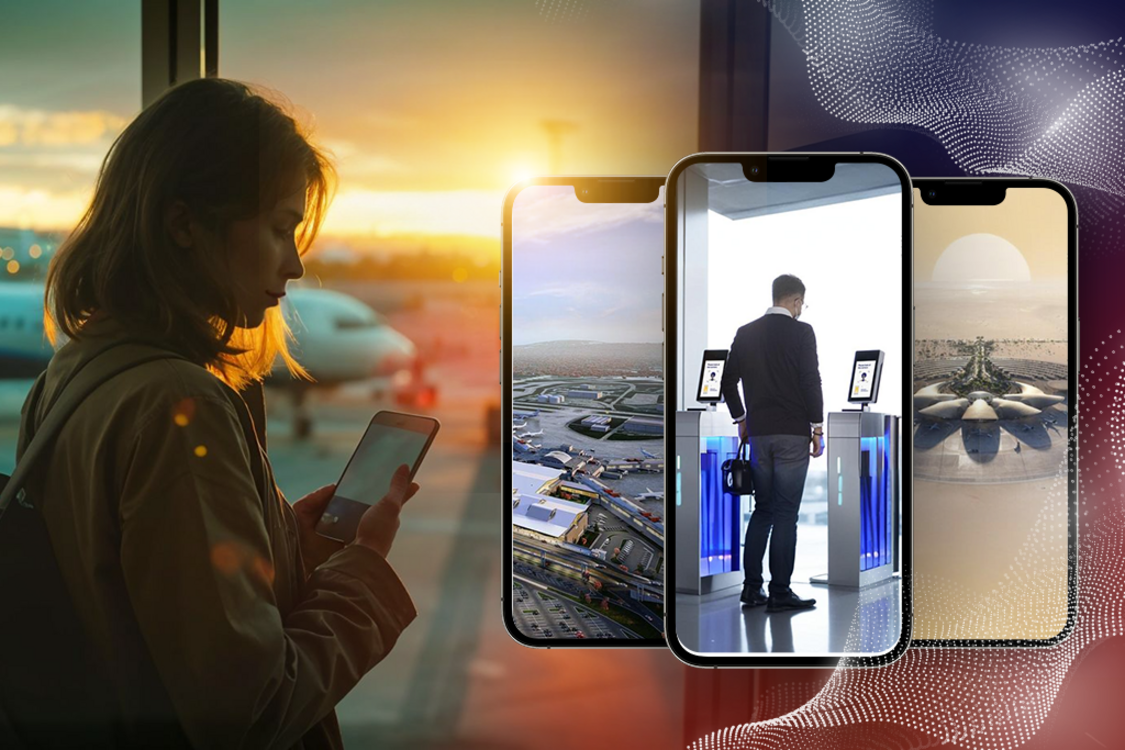
Airports are no longer just transit hubs; they have literally become destinations of their own. As per reports, by 2025, there will be 4.22 billion passengers around the world, who will want smooth, customized and enjoyable travel experiences. Because of this, now airports are coming up with new, innovative ideas that are changing the way people fly. Let’s take a look at these top airport amenities in 2025 and how Mapsted’s location-based technologies are contributing to them.
1. Advanced Biometric Screening
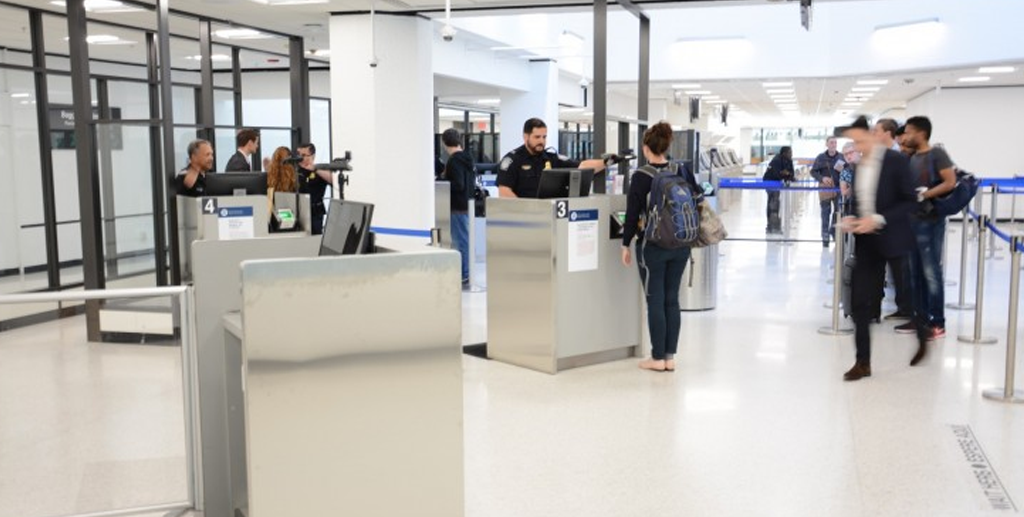
Biometric technologies, such as fingerprint and facial recognition, are changing the way airport security works, making it faster and safer. These improvements fix a problem that has been around for a long time: security lines that take too long.
- Example: Face recognition is used at Miami International Airport (MIA) for international departures and Credential Authentication Technology (CAT-2) is used at Ronald Reagan Washington National Airport (DCA).

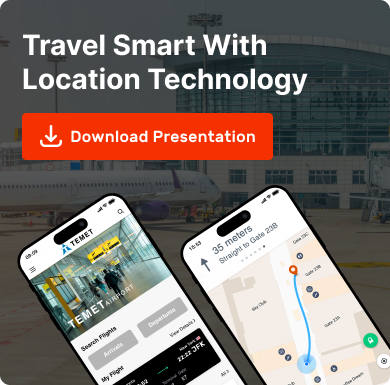
How Can Mapsted Contribute: By looking at traffic patterns, removing bottlenecks and improving passenger flow. Mapsted’s real-time location analytics can make biometric screening areas work better for everyone.
2. Personalized Passenger Services
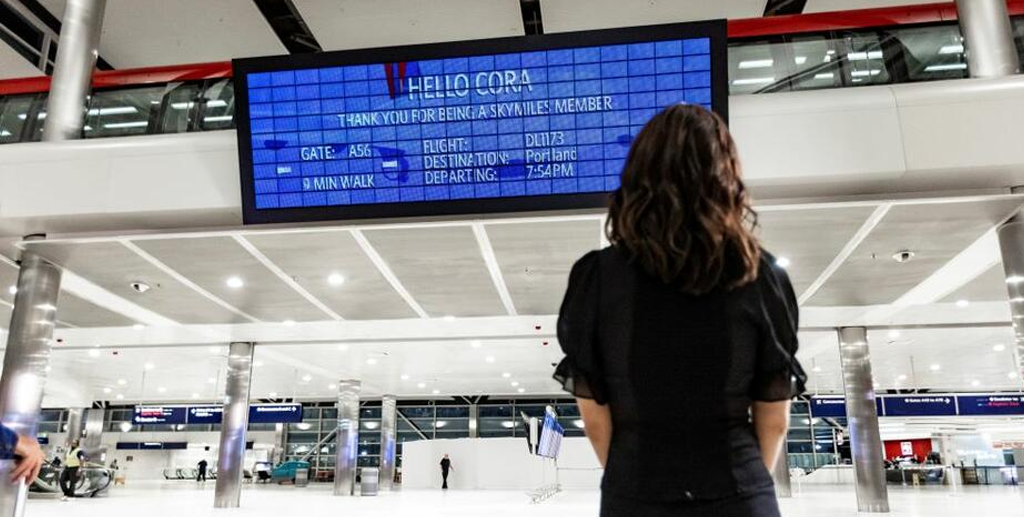
Imagine receiving dining recommendations, gate updates or promotional offers tailored to your preferences. AI-driven systems are personalizing the passenger journey like never before.
- Example: Detroit Metropolitan Airport (DTW) uses Parallel Reality technology to deliver personalized flight details to multiple passengers on a single screen.
How Can Mapsted Contribute: Mapsted’s location marketing technology enables targeted notifications based on passenger location, preferences and behaviours, enhancing engagement and satisfaction.
3. Wellness and Relaxation Zones

Long layovers can be stressful, but now there are areas exclusively available for relaxation. With yoga rooms and meditation pods, airports are making peaceful spots for people to relax.
- Example: Frankfurt Airport (FRA) has quiet zones, yoga rooms and a spa where people can get some rest and recharge during layovers.
How Can Mapsted Contribute: Real-time heat mapping from Mapsted shows where there is a lot of traffic, which helps airports put wellness areas in the best places for people to use and access them.
4. Sleeping Pods and Rest Areas
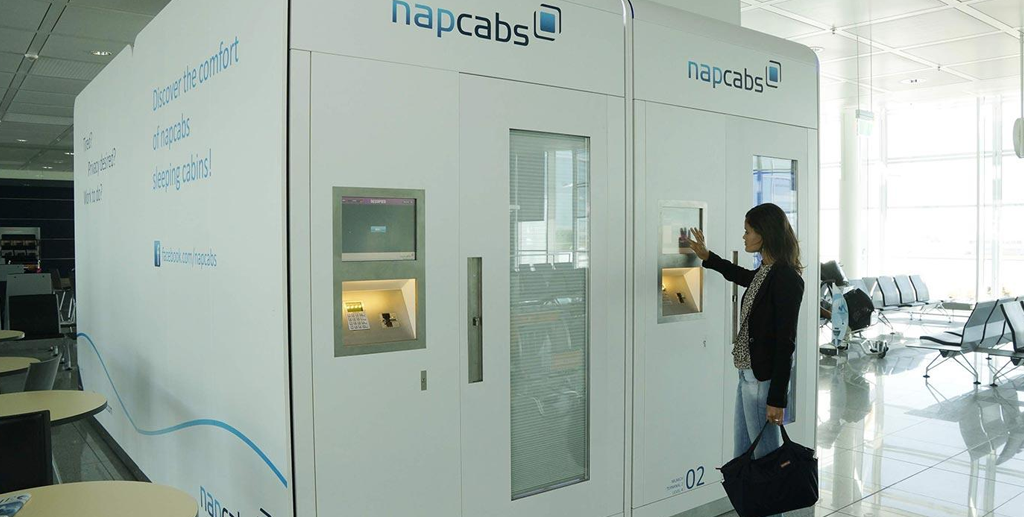
Sleeping pods with privacy features, charging ports and lights that can be adjusted are becoming essential, especially for long-distance travellers.
- Example: Napcabs are available at Munich Airport (MUC) for extra comfort and Infinity Sleeping Pods are available at Delhi Airport (DEL) and so are GoSleep pods at Dubai International Airport (DXB).
How Can Mapsted Contribute: Passengers can find rest areas quickly thanks to interactive wayfinding technology, which makes layovers more comfortable.
5. Improved Airport Lounge Amenities
Airport lounges are stepping up their game by introducing high-end services like spa treatments, private suites and gourmet cuisine. These areas have been thoughtfully planned to provide a peaceful escape from the noisy terminals.
- Example: Chase Sapphire Lounges at major airports offer high-end services and special facilities.
How Can Mapsted Contribute: Mapsted’s interactive maps and wayfinding solutions can help passengers locate lounges effortlessly, ensuring they maximize their time and enjoy the best airport lounge facilities.
6. On-Site Childcare Facilities
On-site childcare facilities give families travelling with young children a safe and supervised place to stay, so parents don’t have to worry about managing children during long trip layovers.
- Example: La Petite Academy runs a childcare centre at Pittsburgh International Airport (PIT).
How Can Mapsted Contribute: Mapsted’s personnel tracking solutions can ensure the safety and efficiency of these facilities, providing peace of mind for travelling families.
7. Automated Systems for Baggage Handling
The global market for airport robots is expected to grow at a CAGR of 16.18% by 2029. Robotics and AI have taken systems for handling bags to a whole new level of excellence. It cuts down on mistakes, delays and the stress of losing your bags.
- Example: The baggage systems at Miami International Airport (MIA) are fully automated and have the latest technologies for finding explosives.
How Can Mapsted Contribute: Mapsted’s location analytics tracks the flow of bags, giving real-time information and streamlining operations to cut down on wait times.
8. Interactive Art Installations
Airports are embracing cultural elements through interactive art, offering passengers an engaging and memorable experience.
- Example: Orlando International Airport (MCO) features “The Moment Vault,” an immersive digital art experience.
How Can Mapsted Contribute: Mapsted’s indoor navigation technology guides passengers to these installations, enhancing their overall travel experience.
9. Sustainability Initiatives
Sustainability has become important for airports. They are turning to eco-friendly practices to reduce their environmental impact. This includes initiatives like green roofs, solar-powered systems and waste reduction programs.
- Example: Amsterdam Airport Schiphol (AMS) uses electric vehicles for transportation; Los Angeles International Airport (LAX) chose environmentally friendly aviation fuels and Kempegowda International Airport (BLR) in Bengaluru has green walls and hanging gardens.
How Can Mapsted Contribute: Mapsted helps airports make the best use of their resources by using real-time data analytics. This makes operations greener and more efficient.
10. Virtual and Augmented Reality Experiences
VR and AR technologies at airports are providing people interactive and immersive experiences, like tours of airports and training for emergencies.
How Mapsted Contributes: Mapsted’s blue-dot positioning technology makes navigation smooth and improves VR/AR apps without the need for extra hardware.
Conclusion
If you look at the above list of best airport amenities in 2025, these ideally showcase the future of air travel development. Airports are becoming travel destinations by embracing innovation and prioritizing passenger well-being. Despite cost, implementation and passenger acceptance issues, airport amenities will improve travel for all. Mapsted’s cutting-edge location-based solutions are a big part of how airports are changing, from providing personalized services to running more smoothly.
If you found this article insightful, don’t miss our blog on How to Enhance Customer Experience in Airports with Location-Based Technology or watch our video on Mapsted Chosen to Elevate to Traveller Navigation at Miami International Airport (MIA) to explore more.
Frequently Asked Questions
Q1. What are the best airport amenities to look for in 2025?
Ans. Some of the best airport amenities that are changing the way people air travel are advanced biometric screening, personalized passenger services and improved airport lounge amenities.
Q2. How do personalized passenger services work?
Ans. AI and data analytics provide real-time updates, dining recommendations and tailored offers based on passenger preferences and location.
Q3. How is Mapsted contributing to these airport innovations?
Ans. Mapsted’s solutions, such as location analytics, interactive maps and IoT technologies, enhance passenger experiences, navigation and operational efficiency.
Q4. What makes Mapsted’s technology unique?
Ans. Mapsted offers minimal hardware, patented solutions that are cost-effective, scalable and easy to implement across various industries, including airports.
Q5. Are wellness zones becoming standard in airports?
Ans. Yes, a lot of airports are adding wellness areas with yoga rooms and meditation pods to improve passenger well-being during layovers.
